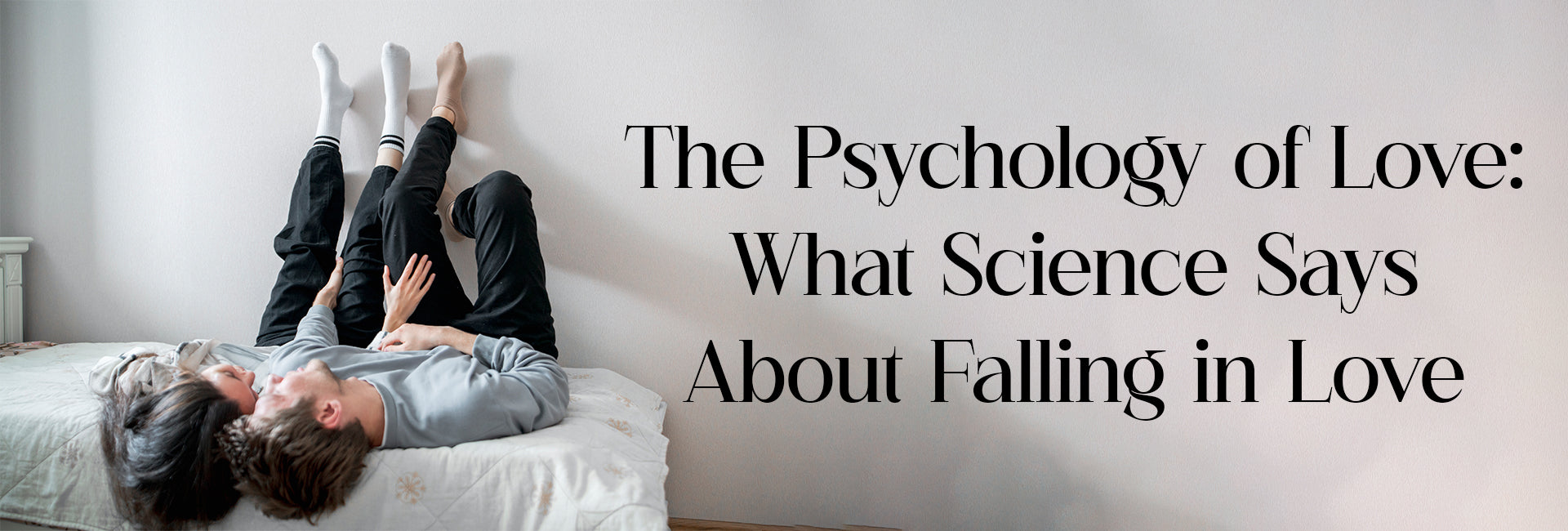The Psychology of Love: What Science Says About Falling in Love
The Psychology of Love: What Science Says About Falling in Love
Are you in love or falling in love?
Love is a beautiful feeling, a feeling that takes us to cloud nine. Since childhood we have heard more about different love stories and romance. Laila Majnu, Heer Ranjha, Romeo and Juilet are some of the famous love stories that make us believe in true love. The initial feeling of attraction to being in love is stimulated by 3 hormones that are noradrenaline, dopamine and phenylalanine that are released when our crush is near, it gives us the feeling of butterflies in our tummy. There are 3 distinct phases in love. The first is attraction, then the second feeling is lust, then the attachment and love where you start making plans for the long term. Let’s find out more about the psychology of love and the science behind falling in love.
Understanding the biological basis of Love
When we think about falling in love, the first thing which often comes to mind is physical attraction. We tend to be drawn towards the people who fulfill our particular criteria for desirability and attractiveness. It turns out that there is a scientific explanation too.
Moreover, researchers have also found physical attraction plays a vital role in the initial stages of falling in love. Our ideal partner as defined by our upbringing triggers the release of neurotransmitters and hormones that will impact our feelings, thoughts and behaviour.
At this stage, our reproductive hormones are released in enormous amounts. However, these hormones will enhance our sex drive and make us more interested in romantic relationships. Although, the brain’s reward center releases a chemical which is known as dopamine when we see someone attractive we feel butterflies in our stomach and this creates feelings of happiness and pleasure making us want to spend more time with the person when we are attracted too.
Love can be felt like a drug as it activates the same brain areas as an addictive substance. MRI studies have also found that there are regions that are related with an addiction and are also activated when we are in love. Moreover, the physiological reaction might explain why we can't stop smiling when we are in love and why we strongly desire to be near our romantic partners.
The Psychology of Love
Getting attached to someone is a component of love. Strong attachment bonds set mammals apart from other types of animals, though other groups which include birds and fish that form strong social connections to help them survive. There are four types of mammalian attachment bonds as:
1) Bonds between Parents and their infants
2) Bonds between Peers
3) Pair Bonds where individuals form a long term social connection
4) Conspecific Bonds or the bonds between individuals of the same species.
Most instances of human love fall into one of these categories like the love you feel for a close one can be classed as a peer bond. A romantic relationship is a type of pair bond and it can begin as a mutual attraction and evolve into love over time. When you like someone, you enjoy their companionship and care about their well-being. But when you love them, those feelings become unconditional.
The triangular theory of Love
The triangular theory of love was introduced in 1986 by the American psychologist Dr. Robert Sternberg who theorized that the love is based on three domains that are:
Commitment (Cognitive)
Intimacy (Emotional)
Passion (Physical)
Each of these domains represents a triangle corner in the theory of Love that is used today to help the researchers better understand the complexity of love.
Different types of Feelings
According to Sternberg’s triangular theory there are seven kinds of love and a range of relationship types that are:
1) Infatuation:
Passion is the main component of infatuation. If you are physically attracted to another person without having an emotional intimacy or establishing a commitment, this is also known as infatuation.
2) Liking:
Liking is a sort of feeling where you share an emotional intimacy, but there is no physical commitment or passion. Friendship falls under this category.
3) Empty:
Empty Love is a committed relationship that lacks intimacy or passion. One of the examples include an arranged marriage or physical relationship that has lost its spark.
4) Romantic:
When you are romantically involved with another person, you share emotional intimacy and share a physical passion. But you haven’t made any long-term commitments.
5) Fatuous:
If you have been swept up by passion into marriage without emotional intimacy then this is fatuous love.
6) Consummate:
For many consummate love is a goal when they envision a spousal relationship. This kind of love has commitment, passion and emotional intimacy.
Initial Stages of Physical Attraction and Sexual Desire
In the initial stages of falling in love, we focus more on the physical aspects of our romantic partner as well as being drawn to the charm, attractiveness and charisma. We also experience the strong feelings of sexual desire which makes us feel happy and euphoric. This stage is often considered to be “falling head over heels”. This early rush of chemistry and emotions makes us feel that we are on the top of the world.
Elevated levels of the love hormone oxytocin often occur during deep dives into romantic encounters that promote the sense of attachment and closeness to that special someone. As we spend more and more time with our partner, sometimes having long talks all through the night and sharing words of affection, we can find ourselves wrapped in a passion that feels like it can last forever. Furthermore, this early stage is just the beginning of what can develop into a true feeling of love and it will be tested and deepened through future experiences including the tougher times.
As the relationship develops, people who have fallen in love tend to develop deeper and emotional connections with their partners. On our own we learn more about the goals, values, interests and begin to communicate our own. This stage is vital for forming a strong foundation of understanding, communication and trust.
Progression to the relationship Commitment
The early feelings will fade as we move towards a more committed relationship. This shift can be a natural relationship as the passionate love of the early stages transitions into the compassionate love. At this stage, partners feel a deep sense of commitment and attachment towards each other and prioritize the partner’s overall well-being.
This kind of love needs effort and dedication from both the partners. Spending more time together and communicating effectively and showing appreciation are often vital in maintaining a healthy relationship and couples can put an effort to remain connected through small gestures like sending loving text messages or planning a special date night. These actions will foster a stronger emotional connection and make a sense of security and happiness in the relationship. Couples who learn about how to make their partner feel valued and loved are more likely to avoid a relationship which becomes routine over time.
Romance in the Modern World
Technology and Social media play a crucial role in transforming how we meet, connect and express our feelings. In the new environment, miscommunications can manifest rapidly. Forming new social skills relevant to the Digital world will be helpful in finding a perfect partner.
Genz’s dating trends like bread crumbing and ghosting have become a common occurrence and these behaviour's will cause deep emotional pain that leaves individuals feeling hurt, confused and rejected. Identifying these patterns and setting up the boundaries can be vital to guard your emotional well-being. Technology has made it easier for people to seek the attention and validation from multiple sources outside their relationships. This requirement for external validation will lead to the feelings of mistrust and insecurity within the relationship.
Opportunities to develop meaningful relationships
Technology has created opportunities for the people to meet potential partners from different cultures and backgrounds. We have a wide understanding and the acceptance of different forms of love which also includes interracial relationships, polyamorous relationships, same-sex relationships. With our busy schedules and other commitments, finding time to give your partner focused on maintaining a healthy relationship can be tough. While some individuals will also find it challenging too.
It will also help to communicate and prioritize with your partner about the importance of spending time together while maintaining the individual responsibilities and interests. A long-term and healthy relationship should not involve sacrificing your happiness or well-being for the sake of the relationship. Moreover, it is crucial to nurture your personal growth and self awareness while building up a strong connection with your partner.
While discussing love in the modern world, most women and men find themselves wondering about the difference between love and lust, trying to realize whether the feelings are genuine or if they are making a mistake. As societal norms and technology continue to develop, the core principles of a healthy relationship remain the same. Researchers have found that trust, communication and mutual aspects are the foundations of strong and lasting love.
Final Thought on this magical feeling of Love
Love comes in many forms. You can love more than one person simultaneously, in different ways. However, emotional intimacy is present in several relationships. The same is true for commitment and passion. Positive attachments are emotionally supportive and will provide you with the feeling of security. If you meet a new person and feel the sensation of falling in love, it can be the outcome and the result of many biological and psychological processes occurring at once. Attraction, Love and Relationships have evolved over time to ensure our survival as a species, while there is not always an explanation for why love happens, but it can still bring fulfillment into our lives.



